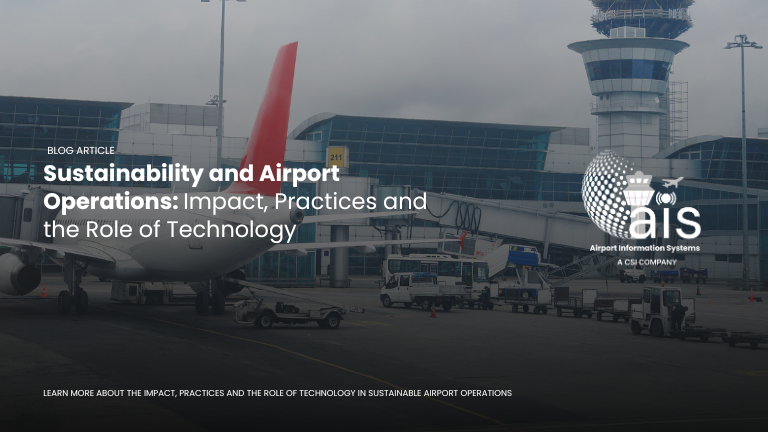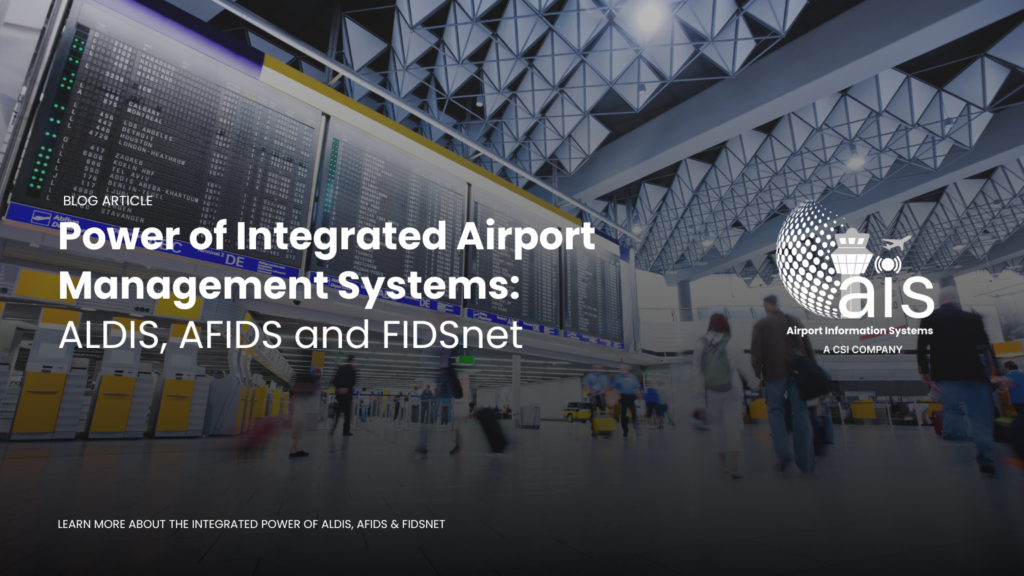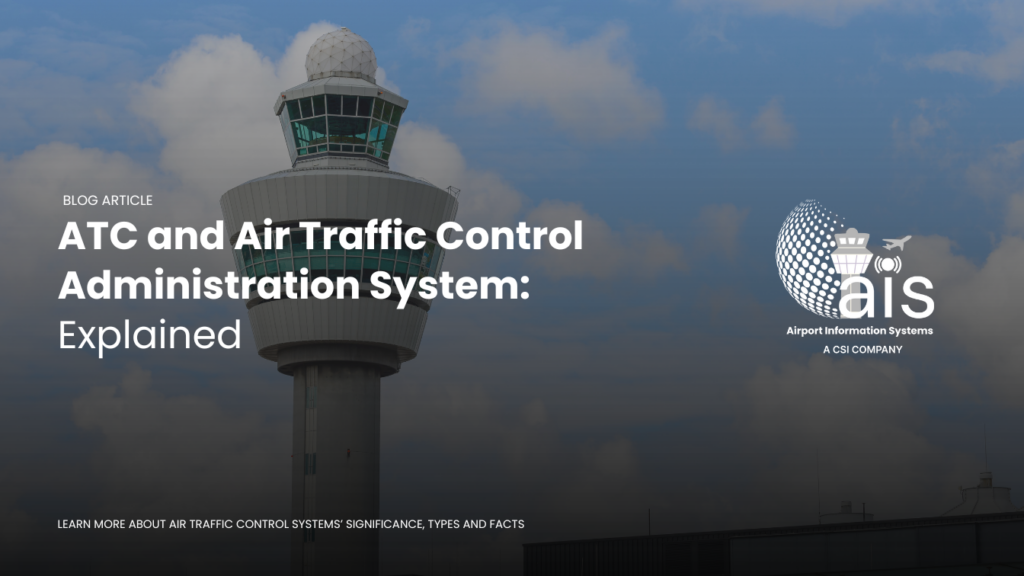Aviation accounted for over 1 Billion Tonnes of CO2 emissions in the year 2018. As the industry continues to grow, naturally, the environmental impact also continues to grow. This is why airports around the world are increasingly adopting environmentally friendly initiatives and sustainable airport operations to reduce their carbon footprint and adverse environmental impact.
Sustainability is no longer an optional consideration but a strategic imperative, prompting airports worldwide to reevaluate their priorities and operations.
Environmental Impact of Airport Operations
Aviation is a vast industry. Within this industry, there are a number of subcategories including Airline operations, Aircraft manufacturing, Flight training, Airport Operations, etc.
Amongst these categories, it is estimated that aircraft ground operations (taxi/runway movements and APU use) alone account for nearly 8% of total aircraft emissions. According to the National Bureau of Economic Research, in the United States, the amount of time that an airplane spends between the gate and runway increased by 23% from 1995 to 2007. This increase in block time will only lead to an increase in both air pollution, as well as noise pollution.
Operating an airport is a behemoth task. It involves a complex web of operations to ensure that everything operational is safe, efficient, and secure at the airport. Some essential components include managing the check-in, security screening, and baggage handling, which are classified as terminal operations; managing access roads, parking facilities, and integration with the city’s public transport, which are classified as landside operations; and, ensuring that the runways and taxiways are free of debris, ensuring that all the runway lights work properly, the paint markings are not chipped, etc, which are classified as airside operations.
All of these operations are various activities that marginally add to the airport’s carbon footprint. When looking at it at an individual level, it may not seem to be much, but optimising these activities helps reduce a significant chunk of overall pollution, whether it would be air, water, or noise.
Technological Improvement for Sustainable Airport Operations
Let’s start with understanding how exactly can an airport reduce its adverse environmental impact? Well, there are several ways to solve this. But one of the easiest ways start with proper airport planning and management. Efficiency is the key. One way to improve airport efficiency is by employing software systems that know your airport in and out. It needs to be customised for each airport so that it knows the unique layout, traffic patterns, and operational intricacies.
This is precisely where AIS comes into play.
Airport Flight Information Display System (AFIDS)
AFIDS contributes to this operational efficiency by providing up-to-date flight information, reducing the need for manual updates and minimising unnecessary movements within the airport. Both passengers and airport staff benefit from the real-time data, creating a more streamlined and environmentally conscious travel experience.
For example, AFIDS optimises Apron Management by reducing aircraft taxiing time, gate time, turnaround processes, etc. This reduces unnecessary delays from factors that the airport can control, thereby reducing the block time of the aircraft. This ultimately reduces the carbon emissions of the aircraft.
Flight Information Display System Network (FIDSnet)
FIDSnet contributes to energy-efficient deployment in quite a unique manner. When upgrading an airport’s flight information systems, the entire display has to be changed. However, FIDSnet can be deployed using the existing display systems, as it is just a plug-and-play dongle that needs to be connected to the display, akin to an Apple TV or a Chromecast.
This reduces the overall waste and carbon footprint that the airport generates, as only the displays that are not working can be replaced. With the remaining ones, FIDSnet just needs to be plugged in. This will help the airport in achieving its sustainability goals by a significant margin.
FIDSnet also ensures end-to-end encryption, guaranteeing the secure display of real-time information on airport screens. This not only protects sensitive data but also enhances the overall cybersecurity of airport operations.
Airport Landing Dues Information System (ALDIS)
ALDIS optimises billing processes by offering a comprehensive platform for configuring discounts, surcharges, and commercial incentives. This not only simplifies financial operations but also reduces paperwork, contributing to operational efficiency, cost savings, as well as reducing the overall carbon footprint of the airport.
ALDIS ensures accuracy in billing by maintaining information in ICAO, IATA, and UK CAA formats, minimising discrepancies and associated reconciliations. Its seamless integration with standard financial systems like SAP and SUN Accounting further streamlines financial processes, reducing redundant data entry and promoting efficiency.
Recommended Sustainable Practices for Airport Operations
Here are some ways how Airports can integrate sustainable practices into their operations:
Energy-Efficient Electrical Systems
Airports can harness renewable energy sources such as solar panels and wind turbines, along with energy-efficient infrastructure like LED lighting and smart HVAC systems.
Cochin International Airport in India (IATA: COK, ICAO: VOCI) is the world’s first airport that is completely powered by solar energy. This greatly reduces the airport’s carbon emissions.
Proper Waste Management
Waste management initiatives should include robust recycling programs covering various materials and actively reducing single-use plastics across airport facilities. This is ideally done in collaboration with the local municipal authority to reduce overlap and increase efficiency by outsourcing non-core activities of the airport.
Water Conservation
Water conservation measures involve implementing efficient water usage practices, from installing water-saving fixtures to employing water recycling systems for non-potable purposes.
The Galápagos Ecological Airport (IATA: GPS, ICAO: SEGS) has a desalination plant on the premises, that purifies seawater for use in the terminal. This wastewater is pumped back to the plant to purify and use it once more.
Noise Reduction Strategies
Noise reduction strategies require collaboration with airlines to promote quieter, fuel-efficient aircraft and implement operational procedures that optimise flight paths and restrict noisy activities during sensitive hours.
Zurich Airport (IATA: ZRH, ICAO: LSZH) employs an interesting method to curb this issue. The airport levies charges on airlines according to the Wake Turbulence Category of their aircraft, and employs an intricate mapping program to calculate the extent of noise exposure resulting from flight activities.
Denver International Airport (IATA: DEN, ICAO: KDEN) in the United States offers a solution to reducing both noise pollution, as well as air pollution. Denver Airport’s Passenger Gates offer plug-in energy sources to aircraft, allowing them to shut down their Auxiliary Power Units to improve air quality and reduce noise pollution.
Sustainable Land Use
Fostering sustainable land use involves incorporating green spaces within the airport premises, utilising native plant landscaping to enhance biodiversity and contribute to a greener environment.
The Bengaluru Kempegowda International Airport (IATA: BLR, ICAO: VOBL) in India is one of the newest airports to feature lush, green flora that is inspired by the forest belt in the state.
Regulatory Framework
Akin to any industry in any country in the world, the Regulatory Framework and Standards in the aviation industry play a very critical role in shaping sustainable practices at airports worldwide.
At the time of writing this article, there are no universally agreed norms on What makes an Airport Environmentally Friendly, but there are a number of broad frameworks and informal certifications that can pave the way for a universally accepted standard.
Certification programs such as Airport Carbon Accreditation by ACI Europe, provide a structured framework for airports to assess, manage, and mitigate their carbon emissions. Airports striving for sustainability often seek certification, showcasing their commitment for the same.
Apart from this, UN SDGs provide a broad framework as to what the regulations can concentrate on. Aligning airport regulations with UN SDGs ensures a globally recognised approach to sustainability is followed.
Sustainable Aviation Fuel (SAF)
One notable development is the emergence of alternative fuels and technology. Sustainable Aviation Fuel (SAF) has gained prominence as a promising alternative to 100% fossil fuels. In the UK, the Department for Transport is planning to introduce a mandate requiring at least 10% of aviation fuel to be made from sustainable sources. This mixture is called SAF or Sustainable Aviation Fuel. SAF, when blended with fossil fuels, could potentially cut carbon emissions by up to 80%.
Hydrogen in Aviation (HIA) Alliance
The Hydrogen in Aviation (HIA) Alliance represents another innovative stride toward sustainability. Hydrogen is increasingly recognized as a promising clean energy carrier for aviation, offering the potential to power aircraft with minimal environmental impact. This alliance, chaired by Johan Lundgren of EasyJet, will collaborate with the government, local authorities, and industry experts to craft a roadmap for scaling up infrastructure and regulatory frameworks, crucial for large-scale commercial hydrogen aviation.
Industry stakeholders actively participate in shaping these regulations, providing valuable insights and feedback. This collaborative approach will ensure that standards remain dynamic, reflecting on advancements in technology, changing environmental priorities, and the collective commitment of the entire Aviation Industry to a greener future.
Conclusion
Airports worldwide are recognizing the imperative of sustainability amid the aviation industry’s substantial environmental impact. With over 1 billion tonnes of CO2 emissions in 2018, airports are adopting eco-friendly practices to curb their carbon footprint. AIS plays a pivotal role in enhancing operational efficiency for sustainable airport management. AFIDS optimises apron management, reducing aircraft taxiing time and, consequently, carbon emissions. FIDSnet ensures energy-efficient deployment through a plug-and-play dongle, minimising waste and enhancing cybersecurity.
Recommended sustainable practices encompass harnessing renewable energy, robust waste management, water conservation, noise reduction strategies, and sustainable land use. Regulatory frameworks like Airport Carbon Accreditation and alignment with UN SDGs provide structured approaches. Emerging technologies like Sustainable Aviation Fuel (SAF) and alliances such as the Hydrogen in Aviation (HIA) signify crucial strides towards sustainability. Collaborative efforts in shaping regulations ensure dynamic standards, reflecting technological advancements and industry commitment to a greener future.
Interested to know more about AIS’ software systems for sustainable airport operations?


